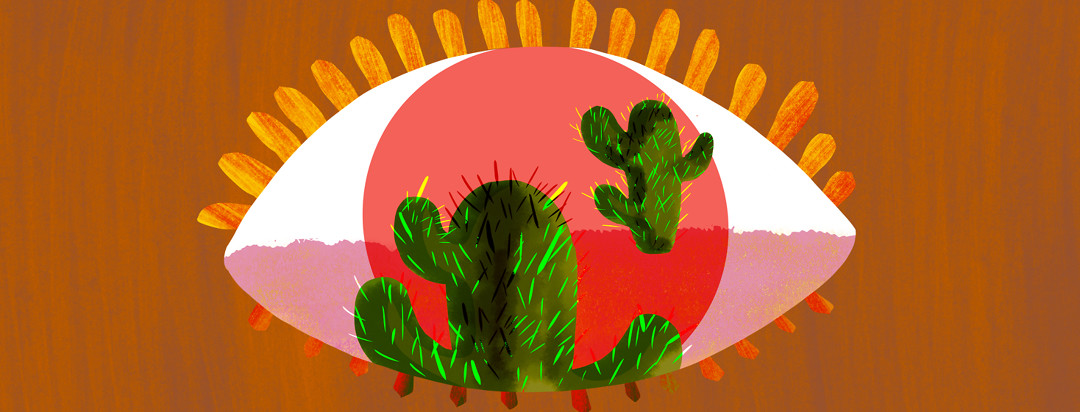What Is the Connection Between Lupus and Sjogren’s Disease?
Reviewed by: HU Medical Review Board | Last reviewed: January 2025 | Last updated: January 2025
Like lupus, Sjogren’s (or Sjögren’s) disease is an autoimmune disorder. This means a person’s body attacks its own healthy tissue. Sjogren’s disease shares symptoms with several other autoimmune conditions. It also often occurs alongside those conditions. Sjogrens is most likely to co-occur with rheumatoid arthritis and lupus. These are both diseases of the connective tissue.1-3
When Sjogren’s does not occur with another connective tissue disease, it is called primary Sjogren’s disease. When it does occur with another of these conditions, it is called associated Sjogren’s disease. In most cases, Sjogren’s is associated with another autoimmune condition.2,4,5
Featured Forum
View all responsesUp to 18 percent of people with lupus live with Sjogren’s disease. Experts do not know exactly why these 2 conditions overlap in so many people. But they suspect the conditions share certain causes. Among these are genetic features and environmental triggers.1,6
What is Sjogren’s disease?
In people with Sjogren’s disease, the immune system attacks the glands that produce saliva (in the mouth) and tears (in the eyes). This process leads to long-term inflammation, which damages the glands.7
Sjogren’s also can cause the immune system to attack other parts of the body, such as the lungs or kidneys. People with primary Sjogren’s are more likely to have these effects than those with associated Sjogren’s. Overall, Sjogren’s symptoms can vary widely. They also may come and go.1,2,7
Most people with Sjogren’s are women. In fact, the condition is 10 times more common in women than in men. Most often, symptoms develop in a person’s 40s or 50s. People with other autoimmune disorders also are at higher risk of developing Sjogren’s.1,7,8
Sjogren’s disease used to be called Sjogren’s syndrome. But, by definition, a syndrome is a collection of symptoms. Since Sjogren’s is a serious, ongoing (chronic), and systemic condition, the term “disease” better describes it.4
What are the symptoms of Sjogren’s disease?
Symptoms of Sjogren’s can range from mild to disabling. Each person may have different symptoms. Some people might experience only one symptom, like dry eyes. Others have several. Depending on the part of the body the immune system is attacking, symptoms can include:1,2,7
- Dry, irritated, and itchy eyes that may burn or feel gritty
- Light sensitivity
- Dry, chalky feeling in the mouth or throat
- Trouble swallowing
- Dry cough
- Joint pain or muscle pain
- Dry skin or skin rashes
Sjogren’s disease can also lead to dental problems, eye damage, or fungal infections. People with Sjogren’s also have a slightly increased risk of a type of cancer called lymphoma.7
What causes Sjogren’s disease?
Experts know that the immune system mistakenly attacks healthy cells in people with Sjogren’s disease. But they do not know exactly why this happens. As with other autoimmune conditions, they suspect a combination of genetic and environmental factors.1
Certain antibodies are very common in the blood of people with Sjogren’s. An antibody is a protein that the immune system makes to protect the body. Usually, antibodies fight off germs like bacteria or viruses. But in people with autoimmune diseases, some antibodies (called autoantibodies) fight healthy cells.2,5,9
Common antibodies found in people with Sjogren’s include:2,5,9,10
- Antinuclear antibodies – About 80 percent of people with Sjogren’s test positive for these antibodies. These are the general type of antibodies that attack healthy cells. They are often a sign of an autoimmune disease, especially in people with high levels.
- Anti-SSA (Ro) and Anti-SSB (La) – Between 60 and 80 percent of people with Sjogren’s have this type of autoantibody. These are common autoantibodies found in people with Sjogren’s.
- Rheumatoid factor – Between 60 and 95 percent of people with Sjogren’s have a type of antibody called rheumatoid factor. This antibody is most common in people with rheumatoid arthritis. But it also is present in many people with other autoimmune conditions.
Also, research has found links between Sjogren’s disease and several genes. People who have certain genes or gene changes may be at higher risk for developing Sjogren’s. These genetic features are typically inherited from a parent. Certain environmental events, like an infection, may then trigger the condition in people who have these genes.2,5,8
How is Sjogren’s disease treated?
There is no cure for Sjogren’s. But it can be treated effectively. The goal of Sjogren’s treatment is to manage symptoms and prevent complications. Both prescription and over-the-counter treatments are available.11
Different symptoms may have different treatments. For example:7,11,12
- Artificial tears and humidifiers can help keep the eyes moist.
- Saliva stimulators, special toothpastes, lozenges, or hard candies can help relieve dry mouth.
- In more severe cases, anti-inflammatory or immunosuppressive drugs can block the systemic effects of the disease.
People living with Sjogren’s should get regular dental and eye exams to look for signs of damage.7
Sjogren’s disease and lupus
Researchers are still trying to understand exactly why people with lupus often also have Sjogren’s disease. But they know the 2 conditions share several common traits, including:2,5,8,10,13
- Symptoms – Lupus and Sjogren’s share several possible symptoms, including joint pain, skin rashes, and kidney damage.
- Autoantibodies – Many people with lupus have the same autoantibodies as those with Sjogren’s. For example, between 35 and 50 percent of people with lupus have anti-SSA antibodies.
- Genetics – Lupus and Sjogren’s may involve some of the same genes and gene changes.
- Environmental triggers – The 2 conditions may have some of the same possible triggers. Some common triggers for lupus are infections, sun exposure, and stress.
- Hormones – Since both conditions mostly affect women, experts are looking into a possible link to sex hormones or the X chromosome.
Research into the possible causes of both lupus and Sjogren’s disease is ongoing.

Join the conversation